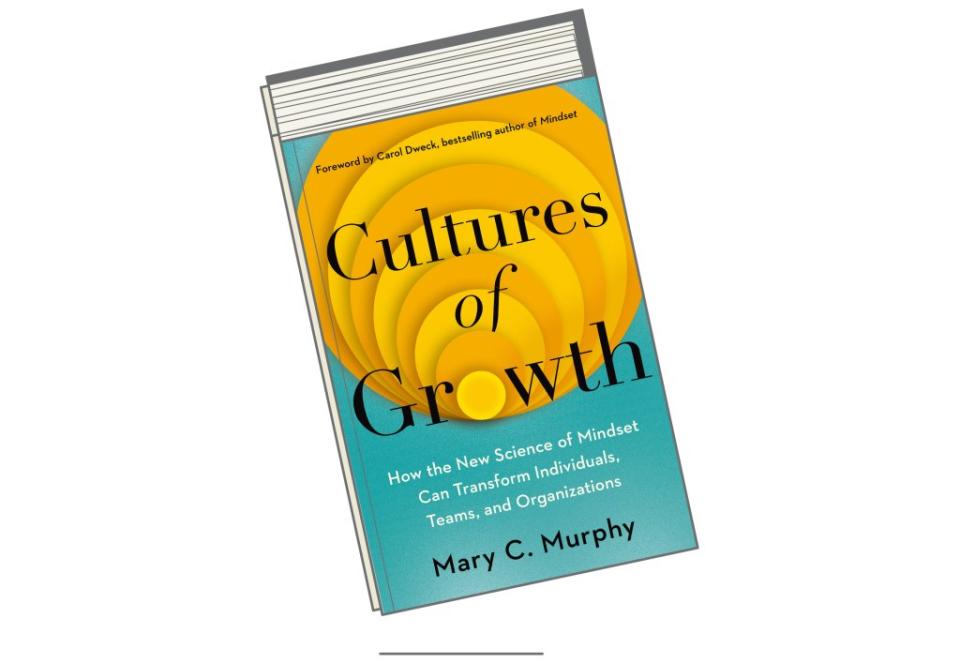How to embrace smart risks and become resilient
Risk-taking is the cousin of innovation. If you want to stay fresh and relevant, risk-taking is necessary behavior. Here are some tactics to help you instill and inspire a mindset that embraces calculated risk—more broadly, as well as one conversation at a time.
Seek out risks
Don’t walk down dark alleys at night or order ghost peppers on your next burrito. But do seek out risks judiciously. In our growth mindset, we seek out thoughtful leaps in the direction where we want to go.
As Wildfang cofounder Emma McIlroy observes, she learned as a competitive middle-distance runner that if she wasn’t failing enough, she wasn’t stretching herself enough—she was playing it safe by competing in a field that didn’t hold enough challenge for her.
If you haven’t failed recently, you could be playing it too safe and too small to make real progress in your life—and the same could be true of your organization. (Incidentally, researchers point to a failure “sweet spot” of about 15 percent of your efforts coming up short.) If this is the case, identify a few areas where you can practice engaging your growth mindset around risk.
Start out by identifying one to three places in work or life where you could take some measured risks. Maybe reach out to an admired peer to learn what they’re doing well; take a risk and request more professional development so you can be ready for the next challenge that presents itself.
Do your research, pack your parachute, and then jump!
Make data your friend
Data put the “measure” in measured risk. Cozying up with data no matter where you are in your organization will help you feel more confident venturing into new territory, and will help you determine early on, and periodically throughout the process, whether the risk you’re taking is moving you closer to your goal or farther from it.
Data don’t tell you whether you’re right or wrong (that’s a fixed mindset view), they tell you where you are in the moment, and what the trajectory from past to present and from present to future could look like. Set markers where you’ll check in and reflect on the process. Reassess, try a new strategy, or pivot if you learn that the risk isn’t paying off.

Take a journey in the Wayback Machine
Before the Wayback Machine became the name of an internet archive, it was a time machine in the cartoon The Rocky and Bullwinkle Show that characters Mr. Peabody and Sherman used to visit important moments in history. You can use a version of the Wayback Machine to revisit your own history of risks that didn’t quite work out as expected.
We tend to shy away from our past failures because they can trigger us into our fixed mindsets: Those failures can lead us to create self-limiting beliefs about our own capabilities. But if we revisit those experiences with notepad and pen in hand, we can mine them for learning. Reflect and take notes on what you learned from those situations and how you handled them.
Were you triggered into your fixed or growth mindset by the failure? Did you abandon ship, or grab the sheet, correct the luffing sails, and plow forward toward the horizon? What triggered or caused you to react either way? How did this experience inform your behavior going forward? How would your present-day growth mindset assess the usefulness of that risk, and if you encountered the same opportunity today, would you take the risk or not? Or would you take it, but approach the risk differently, and if so, how?
Pay attention to the messages you’re sending
Sometimes we can send fixed-minded messages unintentionally. Recruiting and hiring are two areas where this is particularly common. To infuse growth mindset in these areas, be consciously willing to invest in people who may not fit your genius prototype (especially because of their identity or background). Focus instead on those who are willing to bring their skills to the organization and to drive the company to reconsider its approaches. This might feel risky at first, but it’s a powerful way to create a growth-minded organization.
Another way to support risk is to create an atmosphere where employees are not only encouraged to take chances, but see by watching others that it’s safe to do so. If people see those around them get canned when they go out on a limb and it doesn’t pay off, they’re not likely to try something radically different.
Instead, celebrate employee risk-taking at company events, on the website, or in employee communications. Point out successes, but also highlight failures and the useful insights they generated.
Criticism aside, one of the things Amazon founder Jeff Bezos does particularly well is not only champion risk, but also embrace the failure that comes with it, as long as it’s accompanied by learning. Bezos famously celebrates Amazon’s failures because it means they’re trying things, and for every Fire Phone, there are hopefully more Kindles, Fire Sticks, and Alexas. Admittedly, this is a complex example as Amazon has its challenges in other areas, but again, that illustrates the complexity of organizational culture.
There can be growth-minded bubbles in some areas, even if other parts of the culture operate with more fixed-minded behaviors. It’s a difficult endeavor to create and sustain a Culture of Growth across an organization, but it’s worth the risk.
Adapted from Cultures of Growth by Mary C. Murphy, PhD, published by Simon and Schuster. Copyright © 2023 by Mary C. Murphy. Reprinted courtesy of Simon & Schuster, Inc.
This story was originally featured on Fortune.com

 Yahoo Finance
Yahoo Finance 